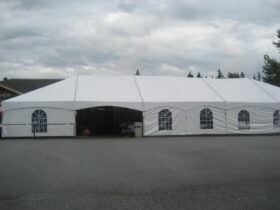In the Catholic Church, as well as in many Lutheran and Anglican churches, a liturgical celebration known as the Feast of the Holy Family is held in honour of Jesus of Nazareth, his mother, the Blessed Virgin Mary, and his legal father, Saint Joseph, as a family unit. The Feast is also known as the Solemnity of the Holy Family. The Holy Family is held up as an example for Christian households throughout the world as the primary focus of this festival. More explanation is available on Iglesias catolicas cerca de mi.
Veneration
Since the 17th century, the feast has been celebrated on a municipal and regional level, and Pope Leo XIII was responsible for promoting the celebration on those levels. The Feast of the Three Kings is celebrated on Sunday that falls within the Octave of the Epiphany (also known as Epiphanytide), as established by Pope Benedict XV in 1921. It can fall between January 7 and January 13, inclusive (see General Roman Calendar of 1954).
In the General Roman Calendar of 1954, the Sunday within the Octave of Christmas was celebrated on Sunday only if it fell on 29, 30, or 31 December since it gave way to the higher-ranked feasts of Saint Stephen, Saint John the Apostle, and the Holy Innocents; otherwise, it was transferred to December 30, and if the feast of Saint Thomas Becket, one of the most popular additions to the calendar in the Middle Ages, was celebrated in double rite (as it was universally The Roman Missal from 1962, whose use is still authorised according to the motu proprio Summorum Pontificum issued in 2007, adheres to the General Roman Calendar of 1960. This calendar places the Sunday that falls within the Octave of Christmas higher on the calendar than these saints and maintains the tradition of celebrating the Feast of the Holy Family on Sunday that follows Epiphany must visit techkmarket.com.
The celebration of the Holy Family
The celebration of the Holy Family was moved on the General Roman Calendar in 1969 to the Sunday within the Octave of Christmas. This means that it is now celebrated on the Sunday between Christmas Day and New Year’s Day (both of which are exclusive), or if both Christmas Day and the Solemnity of Mary, Mother of God are Sundays, it is now celebrated on the 30th of December, which is always a Friday in such years. The day is not considered a sacred day of obligation if it is not celebrated on a Sunday. In contrast to the General Roman Calendar of 1954, the Feast of the Holy Family in the General Roman Calendar of 1969 precedes the various saints whose feast days fall during the Octave of Christmas. These saints include Saint Stephen, Saint John the Apostle, and the Holy Innocents. In addition, the Feast of the Holy Family is celebrated on the eighth day after Christmas.
Conclusion
The veneration of the Most Blessed Virgin Mary and the Most Chaste Saint Joseph is referred to in the Roman Catholic Church as hyperdulia and proto dulia, respectively. Both of these names are reserved in a particular manner for this purpose. These venerating acts are of greater significance than the dulia performed for any other deity. The Virgin Mary is honoured as the Queen of Heaven and Queen of Saints, and Saint Joseph is revered as the Protector of the Roman Catholic Church.
















Leave a Reply